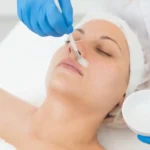THE WHAT? The CEO of L’Oréal says that the beauty market has bounced back from the lows of the pandemic and people are returning to their habits of old, witnessed in the growth of make-up sales.
THE DETAILS Speaking to Bloomberg TV from Expo 2020 Dubai, Nicolas Hieronimus said that skin care was by far the beauty industry’s biggest category and the growth engine in China, accelerating in the US and performing well in Europe.
As for the global supply chain crunch, Hieronimus commented, “Overall, our business is doing well and we have the agility to manage these type of shortages which I think are only short term as the economy is going back to growth right now.”
THE WHY? L’Oréal has been largely unaffected by the global rise in gas prices, continued Hieronimus, as the French beauty giant’s on-going decarbonization mission has resulted in a very low dependence on fossil fuel-generated energy. The French beauty giant has not been overly burdened by supply issues either, thanks to its global footprint. Although in the USA, labor and raw material shortages have made it difficult to meet the surge in demand, Hieronimus admitted.
Aesthetic medicine products are developed and regulated to meet stringent safety and efficacy standards. They are typically administered by trained healthcare professionals such as dermatologists, plastic surgeons, and specialized nurses in clinical settings. These products aim to provide effective solutions for cosmetic enhancement, skin rejuvenation, and overall aesthetic improvement, contributing to both physical appearance and self-confidence.
Key categories of aesthetic medicine products include:
-
Injectables: This category includes products such as dermal fillers, botulinum toxins (e.g., Botox), and collagen stimulators. These injectables are used to smooth wrinkles, add volume, and improve facial contours.
-
Skin Rejuvenation Treatments: Products like chemical peels, microdermabrasion systems, and laser devices are used to improve skin texture, reduce pigmentation irregularities, and enhance overall skin tone.
-
Skincare Products: These include medical-grade cleansers, moisturizers, serums, and topical treatments containing active ingredients like retinoids, antioxidants, and growth factors. They are formulated to address specific skin concerns such as acne, aging, and hyperpigmentation.
-
Hair Restoration Products: Medical treatments and products designed to promote hair growth and treat conditions such as male and female pattern baldness.
-
Body Contouring and Fat Reduction: Devices and products used for non-surgical body sculpting, such as cryolipolysis (cool sculpting) devices and injectable lipolytics.
-
Cosmeceuticals: High-performance skincare products that bridge the gap between cosmetics and pharmaceuticals, often containing potent ingredients with proven clinical benefits.
-
Wound Care and Scar Management: Products like silicone sheets, gels, and advanced wound dressings used to improve healing and reduce the appearance of scars.





